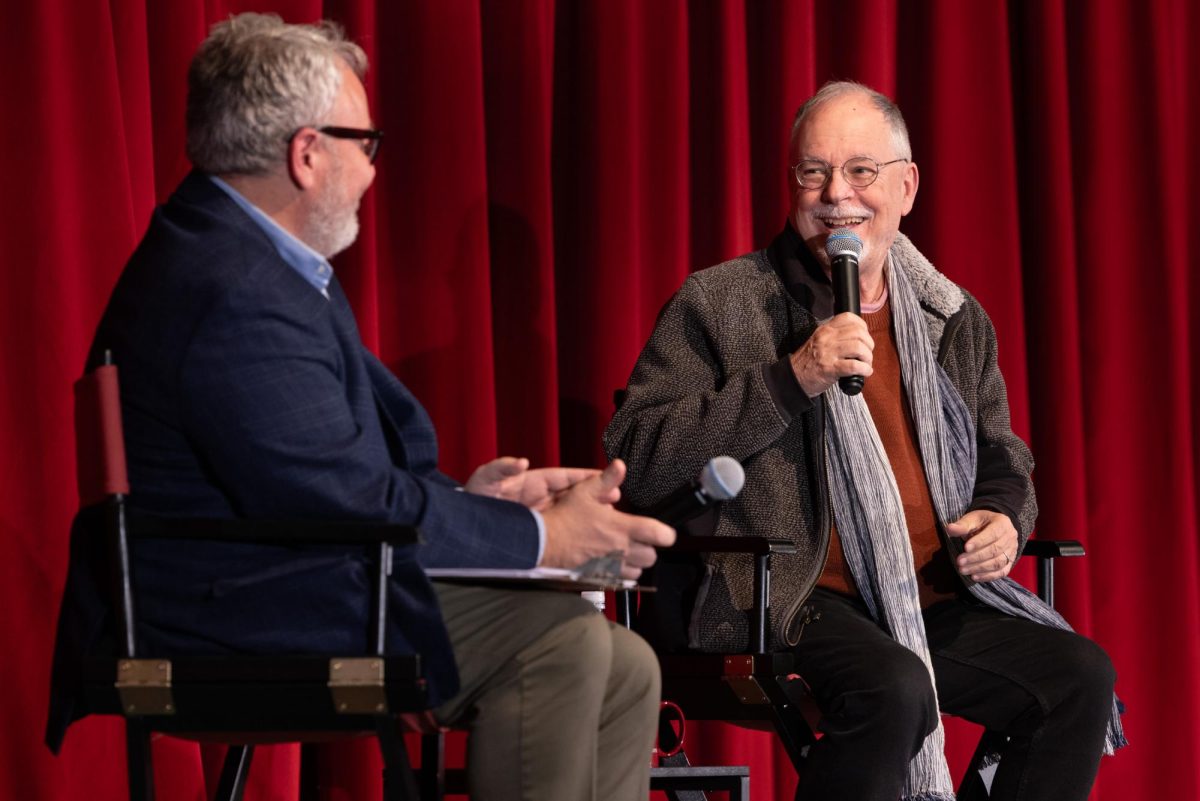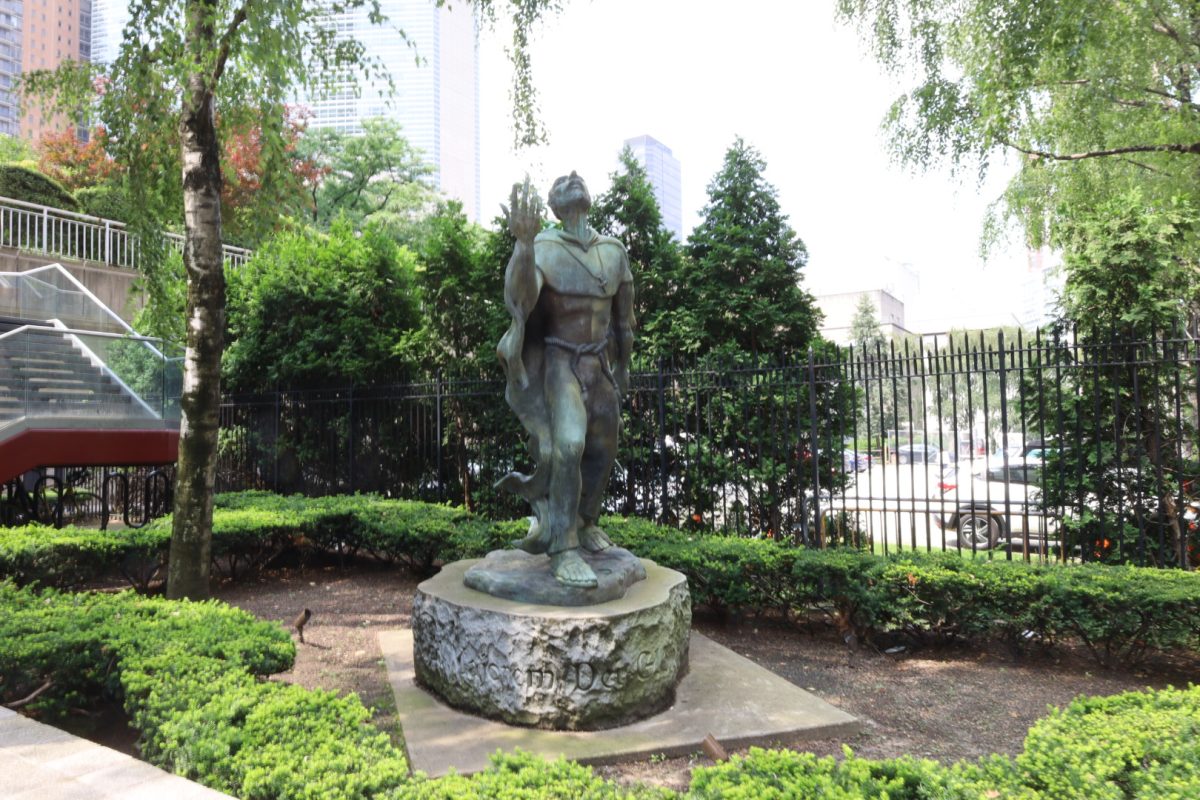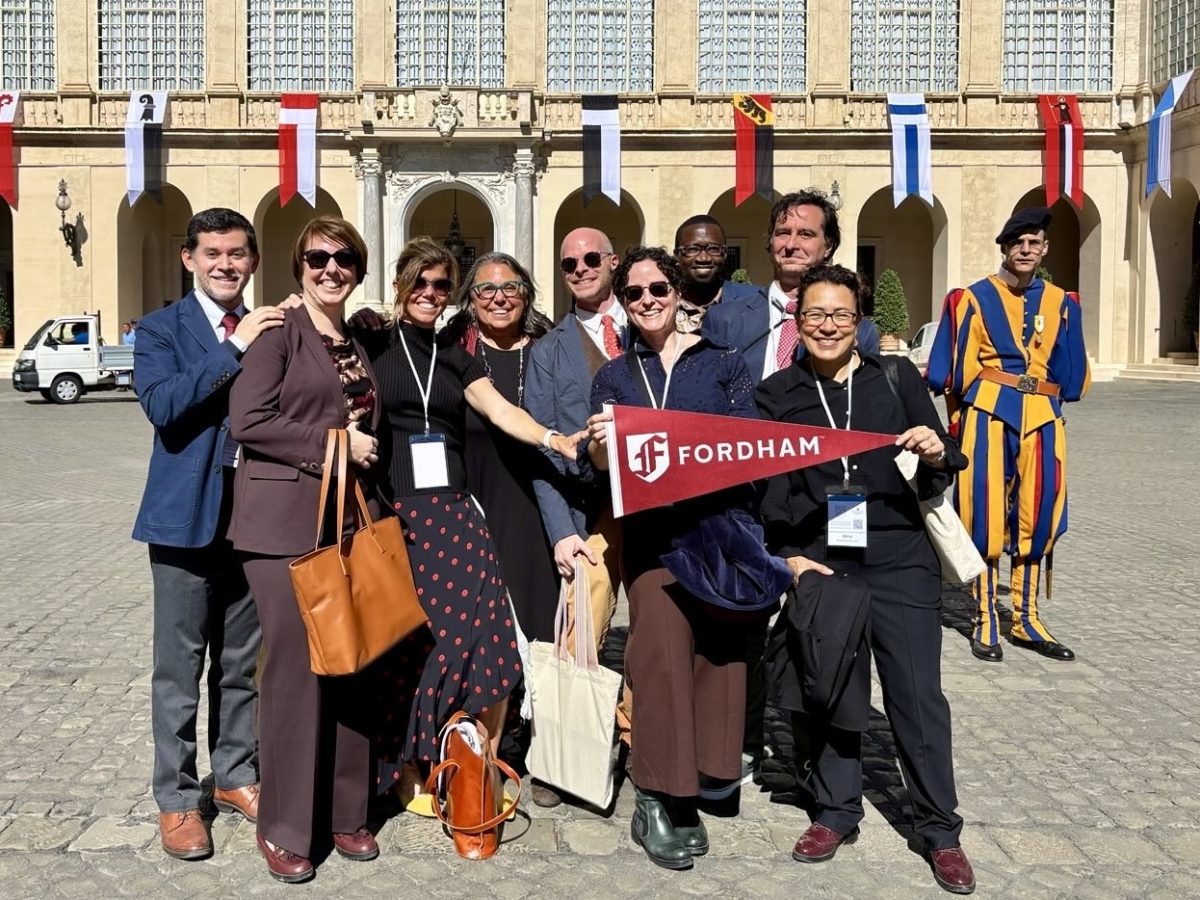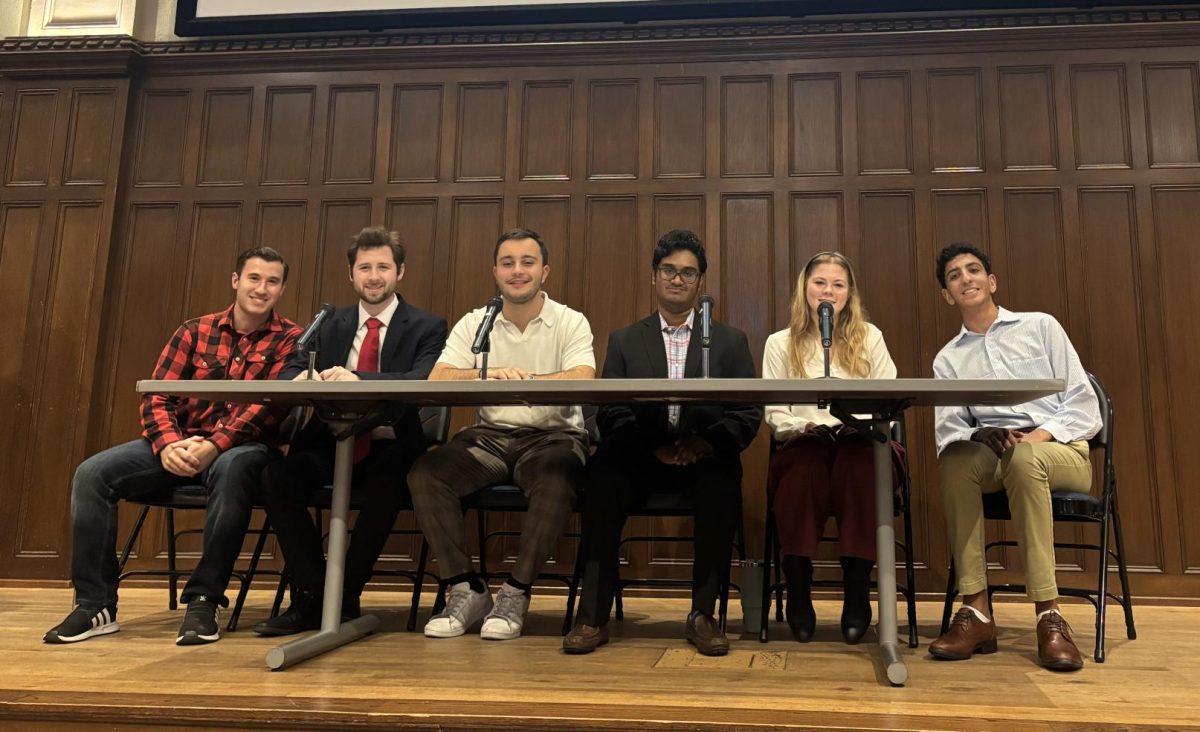
By EDDIE MIKUS
STAFF WRITER
Across the globe, people of all faiths share the need to walk in the footsteps of their religious forefathers. Patrick Ryan, S.J. delivered a lecture on the role of Pilgrimage in the Christian, Jewish and Islamic faith entitled “To Be A Pilgrim: A Geography Of Faith For Jews, Christians, and Muslims.”
This lecture was the annual McGinley lecture, held on Nov. 13 at the Lincoln Center Campus and Nov. 14 at the Rose Hill campus. Professor Alan Minte of the Jewish Theological Seminary and Professor Jerusha Lamptey from Union Theological Seminary responded to Ryan’s lecture.
The lecture, titled “To Be A Pilgrim: A Geography Of Faith For Jews, Christians, and Muslims,” focused on the role of pilgrimage in the Christian, Jewish and Islamic faiths, and featured responses by Professor Alan Mintz of the Jewish Theological Seminary and Professor Jerusha Lamptey from Union Theological Seminary.
“At the heart of the Jewish, Christian and Muslim traditions of faith, pilgrimage plays an enormous role,” Ryan said, according to a printed copy of the lecture. “Each tradition has a sense that at its core lies a journey that all must undertake if they are to reach the destination of life. Pilgrimage is not the same in each tradition, but in many ways all three faith traditions map their world in what I characterize as a geography of faith, largely as a result of their pilgrimage traditions.”
Ryan spoke about how the Jewish faith placed an emphasis on traveling to Mount Zion.
“The desire of Jews to go on pilgrimage (aliyah) to the Holy Land, and especially to Jerusalem, derives from legislation in the Torah,” Ryan said.
According to Ryan, the emphasis on Jerusalem as a pilgrimage site has impacted how members of the Jewish faith have prayed over the centuries.
“When Solomon consecrated the Temple in Jerusalem in the 10th century B.C.E. he insisted that everyone, even Gentiles attracted to the faith of Israel, should ever afterwards utter their prayers while facing in the direction of the Jerusalem Temple,” Ryan said.
In the Christian religion, Ryan stated that pilgrimage tends to emphasize locations that had some importance to the life of Jesus Christ.
“Jesus as Lord and Messiah stands at the center of the Christian faith tradition, and therefore at the center of Christian pilgrimage,” Ryan said. “When Jesus Christ is not at the center of any Christian pilgrimage, it too easily degenerates into a cult surrounding dubious visionaries.”
As a result of this emphasis on Jesus, Ryan said that Christian pilgrimage focuses on a different location in Jerusalem, which differs from many Jewish pilgrimages.
“Although there are many Christian pilgrimage sites in Jerusalem and the Holy Land more generally, for more than a millennium and a half the road of Christian pilgrims coming from outside the Holy Land has led not to Mount Zion, the goal of Jewish pilgrimage, but slightly off center as it were, to the nearby Church of the Holy Sepulchre in Jerusalem, which commemorates both the death and the resurrection of Jesus,” Ryan said.
Ryan spoke about the significance of this shift in pilgrimage in the history of Christian practice.
“The seemingly small but deeply significant decentering of pilgrimage, away from the Temple Mount and towards Golgotha, Bethlehem and the Mount of Olives, reorganized the geography of faith for Christians,” Ryan said.
A third subject that Ryan covered was the importance of the hajj pilgrimage in the Islamic faith.
“The pilgrimage (hajj) to the places in the Arabian Peninsula that Muslims associate with Abraham plays a more central role in the practice of Islam than does pilgrimage in either the post-biblical tradition of Jews or the tradition of Christians at any period,” Ryan said. “One of the five pillars (arkan) of Islam, the hajj nevertheless remains not so quite rigorously enforced as are the other four pillars. Problems in financing the hajj — or performing it at times of civil unrest on the roads to or within Arabia — could excuse a faithful Muslim from undertaking this pillar of Islam.”
Ryan further described the significance that the hajj plays in Muslim life, as well as some of the rituals that are connected with the pilgrimage.
“From the beginning of their hajj, pilgrims are ritually separated from their ordinary, day-to-day life, including any prideful elements in that life,” Ryan said. “They enter into ihram [consecrated status], and after making a total ablution, all male pilgrims dress in two unsewn pieces of white cloth that cover the upper and lower parts of the body. This common dress not only separates the male pilgrim from his previous situation as a Muslim of a particular ethnic and national identity, symbolized by distinctive clothing, but it also bonds him with his fellow pilgrims who wear the same uniform. No specific ihram garments are prescribed for women, but a cover-all is generally worn that leaves only the hands and face visible.”
In his response, Mintz spoke about how the invasion of Jerusalem in 70 B.C.E. by the Roman Empire changed Jewish practices pertaining to pilgrimage.
“What happens to the idea of the experience of a pilgrimage when the Temple is destroyed, and the sacred center, Jerusalem itself, is rendered inaccessible?” Mintz said. “The answer to that question is woven into an extraordinary and much larger story about how a new class of religious leaders, the sages, the rabbis, succeeded in reconfiguring the faith of Israel to survive in a non-Temple world.”
Mintz also talked about some of the significant Jewish pilgrimage rituals that have emerged in modern times.
“The greatest pilgrimage of all today takes place on Lag BaOmer, 33 days after Passover, when hundreds of thousands of Israeli Jews, mostly of North African background, travel to Mount Hirom in Galilee for a day of feasting and festivity,” Mintz said. “Worthy of mention as well are the hundreds of thousands of Jews, mostly Israelis, who undertake a reverse pilgrimage, away from Israel, in order to spend the High Holy Days in the Ukrainian city of Uman, the site of the burial of the Hasidic Rabbi Nachman of Breslov, who died in 1810.”
During her response, Lenti spoke about how Islam emphasizes consciousness of God. This is a concept that Muslims refer to as taqwa, which is a key aspect of the hajj.
“One of the central theological tenets with the Islamic tradition is the notion of taqwa,” Lenti said. “The Quran describes taqwa as the most esteemed human trait, and the only basis on which God discerns between any two human beings. Quran Chapter 49, Verse 13 states, ‘O humankind, we have created you from one male and one female and made you into diverse nations and tribes so that you may know one another. Verily, the most honorable of you in the sight of God is the person who manifests the most taqwa.’ Usually translated, somewhat insufficiently, as piety, taqwa more accurately denotes a more particular and pervasive consciousness of God.”
Students who attended the lecture reacted positively to the content and main speakers.
“This semester’s McGinley Lecture was very engaging,” Nicholas Sawicki, FCRH ’16, said after the lecture. “The speakers representing the Catholic, Jewish and Muslim traditions all engaged in various levels, and it really provided a solidifying and communal basis that transcends all religions.”







































































































































































































